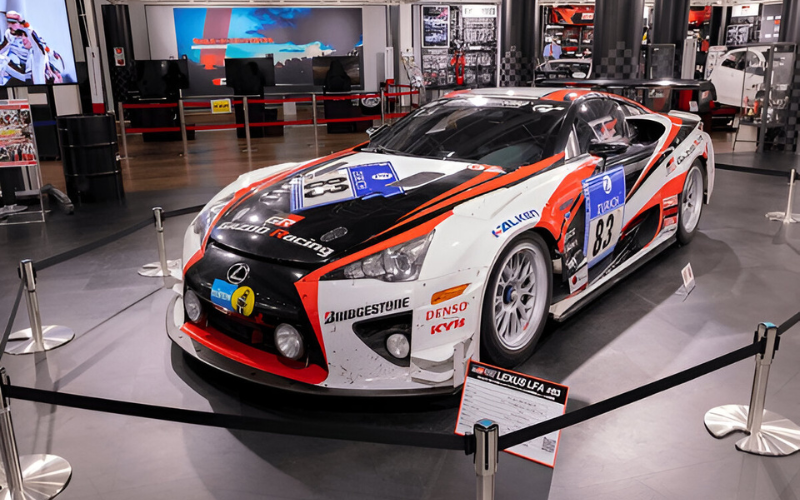Introduction
The Lexus Deportivo LFA isn’t just a high-performance car — it’s a symbol of precision engineering and artistic design. Built with passion, rare in production, and unforgettable in experience, the LFA marks a bold chapter in Lexus’ history. This supercar wasn’t just made to compete — it was created to lead.
The Vision Behind the Lexus Deportivo LFA
When Lexus — a brand known for luxury and comfort — decided to enter the supercar arena, many were surprised. The goal wasn’t just to build something fast. It was to create a car that could stand beside the most respected names in performance and innovation.
The lexus deportivo lfa project began with a clear vision: to show the world what Lexus engineers were capable of when given creative freedom. The team wanted to craft a vehicle that combined high-speed performance with daily usability, while maintaining the quality and reliability Lexus was already famous for.
This wasn’t just about horsepower or 0-to-60 times. It was about emotion, sound, handling, and soul. The LFA was the company’s engineering experiment turned masterpiece — one that would take nearly a decade of development to perfect.
A Closer Look at the Design and Aerodynamics
The design of the Lexus Deportivo LFA was shaped by more than just aesthetics — it was born from wind tunnels and track testing. Every curve had a purpose, and every angle contributed to aerodynamic balance. The look is aggressive yet refined, with smooth, sweeping lines and sharp detailing that catch the eye instantly.
One of the most unique aspects of the LFA’s build was its use of carbon fiber. While many manufacturers were experimenting with lightweight materials, Lexus took it a step further. Instead of outsourcing, they developed their own carbon fiber reinforced plastic (CFRP) technology in-house. This allowed the LFA to remain incredibly light, stable, and durable — key traits for any supercar.
The carbon fiber chassis not only enhanced performance but also gave the LFA a sculpted, almost artistic form. Even the rear wing was active, automatically adjusting at high speeds to increase downforce and stability without compromising on style.
Inside the Cockpit: Driving Experience and Features
Step into the Lexus Deportivo LFA, and you’re not just entering a car — you’re entering a cockpit. The interior wraps around the driver, creating an intimate yet high-tech space that feels more like a race car than a road vehicle.
Lexus focused on balancing luxury with function. The seats were sculpted for support during high-speed maneuvers, while still offering long-distance comfort. The controls were positioned intuitively, and the digital instrument cluster — one of the first of its kind — changed dynamically depending on driving mode and engine speed.
Even the steering wheel was specially designed, integrating a tachometer display and shift lights to help drivers stay focused. And while modern supercars often go overboard with digital features, the LFA kept things minimal — focused on the essentials of the driving experience.
The V10 Engine That Set the LFA Apart
What truly makes the lexus deportivo lfa stand out is its incredible V10 engine — a 4.8-liter powerhouse that delivers both speed and sound in perfect harmony. It was co-developed with Yamaha and tuned like a musical instrument. In fact, the sound of the LFA’s engine is often compared to that of a Formula 1 car.
This engine wasn’t chosen by accident. Lexus engineers originally tested a V8 and a V12, but neither gave the right balance of speed and weight. The V10 was the sweet spot. It allowed the car to rev up to 9,000 RPM, launching the LFA from 0 to 60 mph in under 3.7 seconds and pushing it to a top speed of around 202 mph.
But beyond numbers, the engine’s character made it legendary. It responded instantly to throttle input — so quickly, in fact, that Lexus had to develop a digital tachometer because analog needles couldn’t keep up. The exhaust note was carefully tuned to excite the senses, adding a symphonic edge to every drive.
Rarity, Pricing, and Collector Appeal
Unlike many supercars that chase mass attention, the Lexus Deportivo LFA was built in limited numbers. Lexus produced only 500 units globally, making it one of the rarest cars the brand has ever made. Each one was hand-assembled in a special facility in Japan by a dedicated team of master craftsmen.
This rarity has had a lasting effect on the LFA’s market value. When it first launched, the car cost around $375,000. Today, prices at auctions often reach over $1 million — and they’re still rising. Its value isn’t just in performance — it’s in its place in automotive history.
Collectors love the LFA not just because it’s rare, but because it delivers a pure driving experience that’s hard to find in today’s more computer-assisted vehicles. For many, it’s a car that feels alive — responsive, loud, and beautifully balanced.
Lasting Legacy of the Lexus Deportivo LFA
The lexus deportivo lfa wasn’t just a one-time marvel. It influenced the future of Lexus in both performance and mindset. It showed that the brand could create something truly bold, and that spirit carried forward into models like the LC 500 and the upcoming electrified performance vehicles.
Even today, over a decade after its release, the LFA remains a benchmark for how to blend design, sound, and speed. It still turns heads at car shows, track events, and even on the rare occasion it’s spotted on the road.
Its legacy also lies in how it changed the way people think about Lexus. Once known mainly for sedans and SUVs, the brand now has performance credibility — all thanks to a car that dared to do things differently.
Conclusion
The Lexus Deportivo LFA is more than a car — it’s a legacy. It captured the imagination of drivers, collectors, and critics alike with its balance of technology, craftsmanship, and emotion. Even years after its limited run, the LFA continues to inspire awe and admiration in the automotive world. For those lucky enough to experience it, the LFA isn’t just remembered — it’s revered.
FAQ
Q1: How many Lexus Deportivo LFA units were made?
Only 500 units were ever produced, making it one of the most exclusive models in Lexus history.
Q2: What makes the Lexus LFA’s engine so special?
The V10 engine was lightweight, fast-revving, and produced a sound tuned like a musical instrument. It was designed for both performance and emotion.
Q3: Is the Lexus Deportivo LFA still available for purchase?
Lexus no longer produces the LFA, but it can be found on the resale and auction markets — often at a significantly higher price than its original cost.
Q4: How fast can the Lexus LFA go?
The Lexus LFA can reach a top speed of around 202 mph and can accelerate from 0 to 60 mph in under 3.7 seconds.

